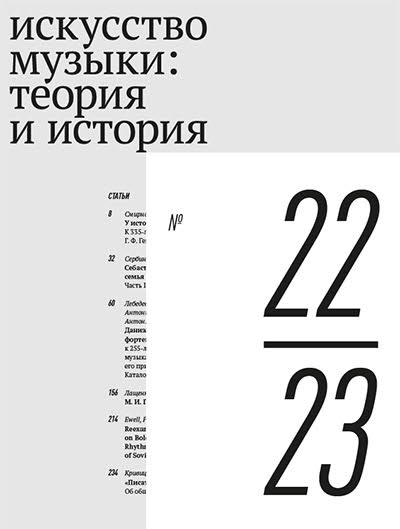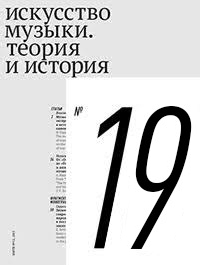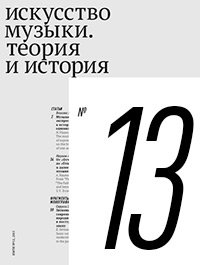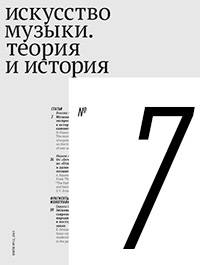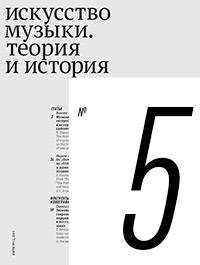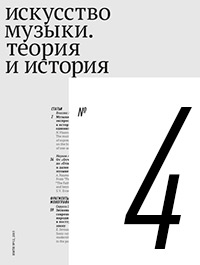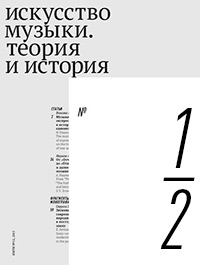2022 № 27
The article discusses three periods of the pre-revolutionary production history of Rossini’s most popular opera, favoured by several generations of Russian public. The first period (1822–1841) is characterized by competitive relationships between Russian, German and Italian opera companies, as well as by a certain antagonism between two types of comic opera, Rossini’s Barber of Seville and Mozart’s Marriage of Figaro.
The second period (1843–1882) is known as the ‘golden era’ of Italian opera companies in Russia. The triumphs of Pauline Viardot and Désirée Artôt became a part of the Russian cultural mythology. The transitional period in the history of the Russian company, marked with a rivalry with the Italians in the European repertoire. The Saint Petersburg production of The Barber of Seville (1882) as a severe test for the Russian company, judged by the Russian critics.
During the third period (1882–1917), The Barber of Seville sung in Russian became an established position of the repertoire and even enjoyed a huge success owing to the participation of great Russian opera stars, especially of Fedor Shalyapin. The success of the work’s Russian version was so considerable also because of the achievements of the opera directors of the late 19th and early 20th century. Rossini’s opera provided actors and directors with ample opportunities for improvisations, as well as for genre transformations (including parodies).
Key Words
The Barber of Seville, G. Rossini, F. Bulgarin, Italian Opera Company, Russian Opera Company, O. Petrov, P. Viardot, I. Vsevolozhsky, O. Paleček, M. Slavina, F. Stravinsky, V. Telyakovsky, F. Shalyapin (Chaliapin), V. Lossky.
The present article continues a series of publications on the principles of editing the classical heritage, formed in the Russian musical culture during the period from the 1930s through the first half of the 1950s. Among the composers whose works were completed and rewritten by Soviet editors, Aleksandr Alyab’yev occupies an exclusive position. In the pre-revolutionary period, only his vocal and piano opuses were published; the literature contains also references on his symphony, overtures, and ‘regimental’ orchestral music. The vast majority of Alyabyev’s chamber instrumental ensembles have been preserved in his archives in the form of single-movement pieces and sketches; there is no available information concerning their existence during the composer’s lifetime and after his death. In 1947, Boris Dobrokhotov began working on the revival of this part of the composer’s heritage. The efforts of the restorer, who published nine of Alyab’yev’s instrumental ensembles, eventually led to doubts about the composer’s authorship. The conclusion that the entire body of Alyab’yev’s chamber-instrumental compositions was a ‘Soviet-style hoax’, stated by Levon Hakobian in rather unequivocal terms, became the reason for conducting the present research with the purpose to rehabilitate the composer as the real author of the works ascribed to him.
Key Words
A. A. Alyab’yev, chamber instrumental ensembles, B. V. Dobrokhotov, editing, completing, L. H. Hakobian, testimonies, archives, manuscripts.
Stanisław Moniuszko’s Halka is certainly the greatest event in the whole history of Polish opera. Owing to it, the young composer’s outstanding talent was recognized by his contemporaries. However, music scholars have not paid sufficient attention to the fact that the opera’s two versions — one performed in Wilno in 1847 and the other staged in Warsaw in 1857 — considerably differ in terms of their genre features and dramaturgy, representing diverse types of music drama: chamber lyric-psychological opera and a symbiosis of lyric-psychological drama and opera from the life of common folk. It was the Wilno version of Halka that determined the main line of Moniuszko’s work in the genre of lyric-psychological opera. The present article describes the compositional history of Halka’s earlier version against the background of contemporary opera in Russia and Europe and compares both versions.
Key Words
S. Moniuszko, Halka, Polish opera, W. Wolski, Rusalka, A. Dargomïzhsky, M. Glinka, Wilno version, Warsaw Opera, music drama.
The present article is the first attempt to discuss the system of directions and instructions to performers and conductors found in Edgard Varèse’s scores of the 1920s. The study of Varèse’s textual directions and instructions is important inasmuch as it allows us to take a deeper look into his creative methods and to conceptualize his directing language.
Key Words
Edgard Varèse, compositional directions, orchestra, text, instructions, semantics, language.
The Chronicle of Sergey Rakhmaninov’s Life and Work is a fundamental scholarly project of the department of music history of the State Institute for Art Studies. The project’s first part was published in 2017 (its 2nd edition, corrected and enlarged, appeared in 2020). The second and third parts were issued in 2022 as a single book. The last part, dealing with Rakhmaninov’s life in emigration (1918–1943), is in preparation.
The ‘pilot’ excerpt, proposed in the present publication, covers one of the most dramatic periods in the life of the great Russian musician: the years 1917 and 1918, when he came to his decision to leave the revolution-struck Russia and did his first steps to adapt to new circumstances, first in Scandinavia, then in the USA. The extant documents reflect the relentless course of events — from the relatively quiet realization of creative plans at the beginning of 1917, through the gradually increasing signs of trouble and distress, to the hasty and risky flight from the country.
The chronicles of the two selected years are presented together only in this publication, since in the finished project they are divided between two parts: the second part ends with December 1917, while the third part begins with the year 1918.
Key Words
Sergey Rakhmaninov, chronicle of life and work, years 1917–1918, Russian revolutions, emigration.
The Russian branch of minimalism was formed in the milieu of Moscow conceptualists in the mid-1970s as an alternative to the official Soviet art. Though the American idea of minimalism took roots in Russian music, the American model as such did not become widespread. On the other hand, some of the conceptual aspects of American minimalism have a key significance for Russian minimalists.
The composers — Alexander Rabinovich-Barakovsky, Vladimir Martïnov, Pavel Karmanov, Anton Batagov, to an extent also Sergey Zagny and Vladimir Nikolayev — have epitomized various forms and types of Russian minimalism, reflecting their highly personal creative images. In their works minimalism appears as a movement of composers-intellectuals creating music for intellectuals. Their main priorities can be defined as follows: conceptual approach, openness towards different cultures and traditions, new syncretism encompassing interactivity and ritualism in their variously configured combinations.
The oeuvre of two generations of composers proves that the so-called minimalism in Russian music has its peculiarities distinguishing it from its American prototype.
Key Words
Minimalism, post-minimalism, post-avant-garde, Moscow conceptualists, new simplicity, repetitiveness, Alexander Rabinovich-Barakovsky, Vladimir Martïnov, Sergey Zagny, Pavel Karmanov, Vladimir Nikolayev, Anton Batagov, Dmitry A. Prigov.
The present text continues a series of articles related to the three-volume edition of Memoirs by Tamara Nikolayevna Livanova (1974–1983), which is being prepared for publication at the State Institute for Art Studies. This is the first attempt to comprehend the change of times, the peculiarities of places, impressions from the events of everyday and artistic life, as they were seen by the author of memoirs. A parallel line of reasoning is Marina Pavlovna Rakhmanova’s own memories of the same places and events, though related to different times. This provides the narrative with volume and perspective.
Key Words
T. N. Livanova, Memoirs, life, years, Moscow, theatre, cinema, reading, music.









